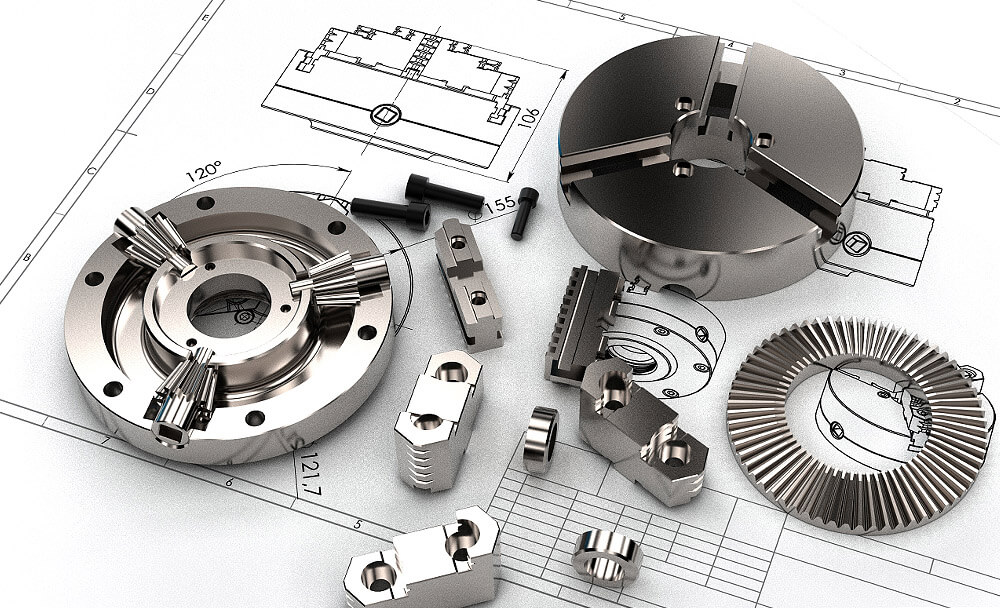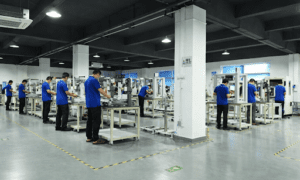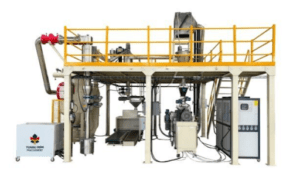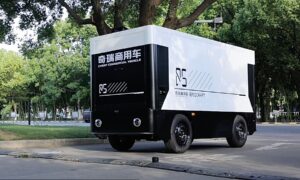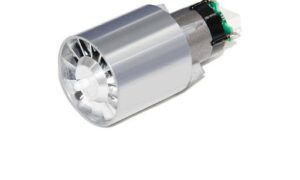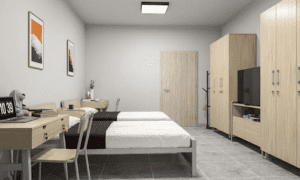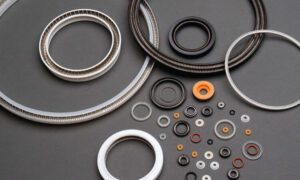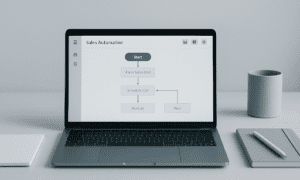In this simple 9-step process, you can learn how to order CNC parts from China into the USA. There are many benefits of outsourcing your production to China, and the most important is the cost-effectiveness and easy compliance with international standards.
Whether you’re a small business, manufacturer, or simply prototyping your ideas, you can learn from our tested and tried method of ordering CNC parts from custom part manufacturers.
Step 1: Define Your CNC Part Requirements
To streamline your CNC machining process from the start, you have to write down precise part specifications to ensure manufacturability, size, precision and performance.
Prepare CAD drawings
Whether you have a 3D part model or not, all parts require a technical drawing. You can provide a 2D drawing of your part or a 3D model with specifications made in a CAD software like SolidWorks, AutoCAD.
Include all dimensions, geometric dimensioning and tolerancing (GD&T) annotations, and critical features such as hole sizes, threads, and chamfers. Use standards tolerances like ± 0.01” or general tolerances like ± 0.1 mm.
Most CNC manufacturers work with STEP, IGES or STL files, and you can easily convert between these files using your CAD software.
Choose Material
The choice of materials depends on application requirements, and mechanical properties like strength and toughness are a good measure for demanding applications. Environmental conditions can help you decide if you need high corrosion resistance and temperature-resistant materials.
- Aluminum (6061, 7075): Lightweight, corrosion-resistant, suitable for structural components.
- Stainless Steel (304, 316): Durable, ideal for medical or marine applications.
- Titanium: High strength-to-weight ratio for aerospace, though costly.
- Plastics (ABS, POM): Cost-effective for non-structural parts. Verify material availability with suppliers, as exotic alloys may increase lead times or costs.
Set Quality Standards (CMM report and Surface Roughness Rating)
The last thing included in or with your drawings must be clear quality metrics, as this can also help you filter out CNC services that do not meet your part’s quality requirements. For example, for CNC medical prototyping, you’ll need tight precision capabilities for implants, biomedical materials, and medical ISO certifications.
Define quality metrics, such as Coordinate Measuring Machine (CMM) reports, to verify dimensional accuracy and surface roughness (Ra 0.8 µm for smooth finishes, Ra 3.2 µm for general parts). Specify functional testing, such as pressure or electrical continuity tests, if required.
Step 2: Shortlist Suppliers
What Drawings and CAD Files Do You Need To Send To Suppliers and Factories?
To define your requirements for machined parts as best as possible, send a comprehensive technical package that includes:
- 2D and 3D drawings
- Bill of materials
- Tolerances
- Surface finishes
- Material grades
- Critical features
Platforms like PARTMFG allow direct file uploads for instant quotes and analysis.
Request DFM Support, Unit Cost, Tooling Cost, and Sample
You can request Design for Manufacturing (DFM) feedback to optimize for cost and efficiency. DFM can help you adjust tolerances and optimzie your design. For DFM, you can request:
- Unit Cost: Per-part cost based on material, complexity, and batch size.
- Tooling Cost: One-time costs for custom fixtures, typically $500–$5,000.
- Sample: A prototype or first article for inspection.
Suppliers like PARTMFG provide detailed inspection reports
Step 3: Choose Your CNC Factory
Selecting a CNC factory for consistency and quality can sometimes require multiple orders but a few steps can help you save some orders and delivery times. Evaluate compliances, ISO certifications, equipment, manufactured part gallery and if available, Google Maps data and Trust Pilot reviews.
Confirm compliance and Material Certificates
Verify adherence to standards like ISO 9001:2015 or IATF 16949 (for automotive). Request material certificates (Mill Test Certificates from TUV or SGS) to confirm composition and compliance with ASTM or DIN standards.
Check Machines and Inventory Capability
Confirm the factory has advanced equipment like 5-axis CNC machining and quality inspection tools like CMMs and optical comparators. You can also request a material sample and inventory material availability.
If your parts are highly important, you can also arrange virtual audits and third party inspections. Factories in the Shenzhen region offer great material capabilities for manufacturing.
Step 4: Ordering Through Your CNC Machining Partner
Modern suppliers provide a quick and streamlined ordering process
Upload Your Designs and CAD Files
Upload your technical package to the supplier’s platform or via secure email. Review DFM feedback and finalize specifications. Ensure all details, including tolerances and quantities, are confirmed in writing
Get an Online Quote
PARTMFG provides instant quotes after file upload, detailing unit costs, tooling, and lead times. Some parts can be manufactured in as little as 36 hours and shipped to you in 72 hours.
Proceed With Manufacturing
Issue a purchase order (PO) specifying terms, quantities, and timelines. Suppliers typically require a 30–50% deposit to secure production slots. You can either receive email updates on your part production progress and some platforms offer online order tracking.
Step 5: Choose Your CNC Part Delivery Method
Most CNC manufacturers also provide shipping solutions to your doorstep step but you can also arrange your own shipping.
For Oceans Deliveries to USA: ISF 10+2 requirement
For ocean shipments, file an Importer Security Filing (ISF 10+2) 24 hours before cargo loading in China, including 10 importer data elements like consignee, commodity description, and 2 carrier elements. Non-compliance risks fines up to $5,000.
Freight forwarders, often recommended by PARTMFG, handle ISF filing. DHL and FedEx are alternatives for urgent or small orders using air freight.
Step 6: Check base duty + any trade remedies
Calculate import costs accurately to ensure profitability. Base duties for CNC parts HTS 7326.90 for steel range from 2.5–7.5%. Section 301 tariffs (up to 25%) may apply due to U.S.-China trade policies. Many manufacturers provide additional discounts and competitive pricing due to the tariffs which can actuall help you save money and makes part manufacturing in China still cheap.
Step 7: Delivery to Your Warehouse
Ensure parts meet regulatory and quality standards upon arrival.
Country-of-origin marking rules (permanent, legible, conspicuous)
U.S. Customs requires permanent, legible, and conspicuous markings ( “Made in China”) per 19 CFR Part 134. Suppliers like PARTMFG ensure compliance. Verify markings during inspection to avoid penalties.
ISPM-15 compliant wood packaging
Wood packaging (e.g., pallets) must comply with ISPM-15, requiring heat treatment or fumigation. Suppliers typically provide certification. Non-compliance risks quarantine or destruction.
Step 8: Reorder Smoothly and Scale Your Parts
You can keep your design files saved with your supplier for quick reordering and after-sales support. This can also help you negotiate long-term deals at better prices, ensuring original quality and scaling your production with suppliers.
Conclusion
Ordering CNC-machined parts from China to the USA requires some knowledge, planning and importing knowledge. Suppliers usually process hundreds of orders every month and can guide you through the entire process. This is why you should not only choose a factory based on capabilities but also on customer support and delivery.

